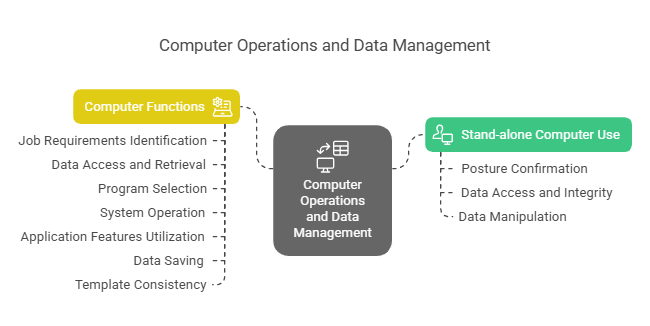Understanding Job Specifications in Using Computer Systems in the Printing and Graphic Arts Sectors
Posted by SkillMaker in Mar, 2025
What is a concise description of using computer systems in the printing and graphic arts sectors?

Using computer systems in the printing and graphic arts sectors involves the seamless integration of specialised software and hardware to create, design, manage, and produce printed and digital media. It enhances efficiency, precision, and creativity in producing various graphic and printed materials.
Listen to this article as a podcast
Why do people in the Printing and Graphics industry need to use computer systems?
Professionals in the Printing and Graphics industry rely on computer systems to streamline processes, enhance creativity, and deliver high-quality outputs efficiently. These systems enable precise design, layout, and production, reducing errors and material waste while supporting innovative and cost-effective solutions.
“The adoption of computer systems in graphic design and printing marks a transformative step towards unmatched precision, creativity, and market responsiveness.”
What are the key components or elements of using computer systems in the printing and graphic arts sectors?
Key components include:
- Design Software: Tools like Adobe Creative Suite for creating and editing designs.
- Hardware Systems: Computers, scanners, and printers for processing and outputting work.
- File Management: Systems for storing, retrieving, and organising large design files.
- Data Input Devices: Graphics tablets and digital pens for precision in design work.
- Networking: Ensures smooth collaboration and data sharing within teams.
What key terms, with descriptions, relate to using computer systems in the printing and graphic arts sectors?

Registered Trademark®
- Raster Graphics: Images made from pixels, suitable for complex imagery.
- Vector Graphics: Created from paths, ideal for designs needing scalability without losing quality.
- CMYK: Cyan, Magenta, Yellow, Key (black); a colour model used in colour printing.
- WYSIWYG: “What You See Is What You Get” editing interface that reflects the final output closely during design.
- Bleed: Extending design elements beyond the expected cut line to avoid unprinted edges after trimming.
Who is typically engaged with operating or implementing computer systems in this sector?
Graphic designers, print operators, IT analysts, and system administrators are the key personnel involved in operating or implementing computer systems within this sector. They work collaboratively to ensure the smooth operation and advancement of technology-driven printing and design processes.
How does this topic align or integrate with other components of the Printing and Graphics industry in Australia?

This topic integrates seamlessly with quality control, production processes, marketing strategies, and customisation services. Computer systems enable high-quality production, effective collaboration across teams, and the ability to meet diverse client needs with tailored solutions.
Where can the student go to find out more information about using computer systems in the printing and graphic arts sectors?
What job roles would be knowledgeable about computer systems in this sector?
Roles include:
- Graphic Designers
- Print Technicians
- IT Support Specialists
- Production Managers
- System Administrators
What is using computer systems in this sector like in relation to sports, family, or schools?

In sports, using computer systems here is like the precision and strategy needed in game planning. Within a family, it parallels managing a household with efficient routines and technology. In schools, it mirrors the use of digital tools for enhancing learning experiences and creative expression.
(The first edition of this post was generated by AI to provide affordable education and insights to a learner-hungry world. The author will edit, endorse, and update it with additional rich learning content.)
(Skillmaker – 2025)

 Post Tagged with
Post Tagged with